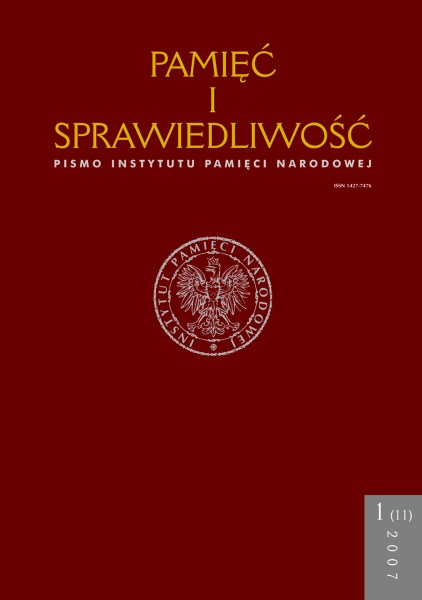From the Failed Revolution to Riot-Prevention. The SED-Dictatorship from 1953 to 1961
Remembrance and Justice, Vol. 11 No. 1 (2007), pages: 33-60
Publication date: 2007-12-30
Abstract
The uprising in June 1953 in East Germany is besides the erection of the wall in 1961 and the revolution of 1989 the most decisive historical event in the history of the GDR. “June 17th” is of tremendous importance for the further development of the GDR – both state and society. This contribution aims at discussing the consequences of the riot. Moreover, the thesis is elaborated that there is an interrelationship between the failed revolution in 1953 and the erection of the wall in 1961 – an interdependence that has hardly been considered in academic discussions yet. The article starts off from a discussion of the West German transformation
processes in the 1960s to 1980s in assessing “June 17th”. Relying on these thoughts, I consider in some detail whether developments in East Germany or political reasons in West German politics have caused this shift in evaluating the riot. This part aims at showing which exemplary continuities and fragmentations between 1953 and 1961 may be identifi ed. In doing so I will focus on the “inner state foundation” [“innere Staatsgründung”] – a concept that expresses another central thesis of mine. Since this process can be analysed only exemplarily, the article concentrates on some decisive developments such as the transference of internal party processes and structures onto the whole society, the process of
structural and discursive subversion of the church and the militarisation of society as well as the hegemony of the party in some central sectors of society (industry, agriculture, university). This fi nally includes a brief glance at the changes in the
relationship between the Soviet occupation army and the SED-leadership. In two following theoretical parts I aim at developing explanations for these empirical findings. Largely, I am concerned with the concept of the “inner state foundation”
and then the concept of “revolution”. Both terms are being discussed highly controversial for the respective historical context. To wind up my paper, the consequences of the “inner state foundation” for the further progress of GDR-history are being discussed.
Most read articles by the same author(s)
- Łukasz Kamiński, Petr Blažek, Antoni Dudek, Andrzej Friszke, Idesbald Goddeeris, Anthony Kemp-Welch, Ilko-Sascha Kowalczuk, Mark Kramer, Petre Opriş, Vasil Paraskevov, Wojciech Polak, Aleksander Stykalin, [Ankieta] Czym była „Solidarność”? / Jaką rolę odegrała „Solidarność” w najnowszej historii? , Remembrance and Justice: Vol. 16 No. 2 (2010)
- Ilko-Sascha Kowalczuk, The 1989 Revolution in the GDR , Remembrance and Justice: Vol. 18 No. 2 (2011)
- Monika Tantzscher, Jolanta Żukowska, The Stasi operational groups in Eastern block countries , Remembrance and Justice: Vol. 9 No. 1 (2006)
 Język Polski
Język Polski
 English
English
 Deutsch
Deutsch
 Français (France)
Français (France)
 Italiano
Italiano
 Русский
Русский


 PDF (Język Polski)
PDF (Język Polski)
